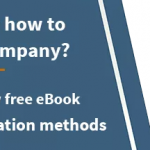[vc_row][vc_column][vc_column_text]How to identify your target customer? You must choose which type of customers you want to serve. Wishing to help everyone is a mistake, just like it would be to cover all the needs in your customer segment, or trying to imitate every new idea. Many companies are living a “herding behavior,” following the leader´s steps and comfortable in vulgarity.
Reflect on which customer segment your company has the more potential to create a unique offer that covers a type of unattended need. Once discovered, be willing to renounce on the other types of customers that don´t have such a need for that service.
Insurance company Progressive discovered a poorly-served collective. Those with alcohol abuse or risk behavior history had great difficulty in being accepted by insurance companies. They tackled this collective, which had few alternatives, and which, in turn, allowed them to charge higher premiums. Thanks to their ability to handle information, they were able to identify segments within this collection that didn’t pose such risk, like drivers with drinking history but also parents with small kids.
To add real value, you must step in the customers´ shoes and understand their behavior. Try to understand the psychological reasons behind their purchases. You must feel how they feel. Don’t project your feelings to the market. Think about their concerns, needs, preferences, thoughts, hopes, relationships, and daily routines. For this, it’s essential to see them in action:
- How are your customers?
- What are their personalities like?
- Whom do they identify with?
- What are their hopes?
- How do they see themselves?
Try to think as customers do. Don’t focus only on the features of the product or service, but on the benefit to the customers, on how they perceive it, on the psychological value. What do customers really value? What touches their core?
Customers buy solutions
See your customers as strategic assets and innovate around them, not around your products or services. Instead of thinking about the product used by the customers, think about the problems they have to address. Customers don´t buy a drill, they buy a hole. They don´t buy a service, but a solution.
It requires empathy to understand the feelings of a type of user and their frustrations. That’s why many business models have been born out of users’ frustrations.
Dropbox Case Study
Dropbox is an example. It was founded in April 2007 by Drew Houston, a 27-year-old man. The idea came to him while on a bus when he realized he had forgotten his pen drive. He decided to program service for synchronizing and sharing files between computers on the Internet. This way, he could always have access to the latest version of documents.
Every job has a functional, emotional, and social dimension. You must decide who will and who won’t be your customers. Ask yourself: ç
- Who are my direct customers?
- Who are my final customers?
- What issues do they have?
- What can I do to address these issues?
- How do these customers use existing products to satisfy their needs?
- What can make me different in a way that makes these customers interested?
[/vc_column_text][vc_column_text]
Making customers your fans
After knowing who is your target customer, you have to make them your fans, you must give an overabundance of the feature they value the most. Focus your efforts on attracting and engaging fans – those who can be most interested and most loyal. They will help you spread the message among their peers. Turn them into your army.
It´s about closing the space between problem and solution, between what is and what could be, between the existing experience for users and the one they could have. But be careful, you must solve real problems, not ones created by you.
Maybe you can create a new class of customers that didn´t exist before like FedEx did when they developed a new market for those who wanted their packages to arrive in just one day, guaranteed.
Net jets found that business travelers had two options in two extremes, either they traveled on a commercial plane, enduring all the discomforts of an airport, or they had a corporate aircraft, with the enormous costs this implied. They understood that there could be a middle-ground formula, allowing executives to rent a private plane whenever they needed it.
After analyzing what the customers want and your capabilities, you must look at competitors and alternatives to see if there is something that will make you different in the eyes of those customers.
Naturally, the strategy is to satisfy the customer and gain a profit while doing so, that´s why you must ask yourself if the customer is willing to pay the price you have to charge for it to be profitable for the company. Thus, it’s about creating value for your customers and being capable of capturing value for yourself as well.
Next steps after knowing who your target customer is
Knowing who is your target customer is vital, and that is a great first step. Though, you must think that the strategic management of a company has many other areas that business owners must pay attention too as well.
It is about a collective approach towards dominating all the areas of your company through the right strategy, depending on your goals, industry, and many other factors.
Our CEO has written an excellent book that will help you get a glance and overview of how to achieve this. Fill out the quick form and download it today.[/vc_column_text][vc_cta h2=”Download for free the bestselling book: “FIT: STRATEGY, VALUE, AND PRICE“”]Please fill out the form and enjoy the book written by our Chairman, Enrique Quemada.[/vc_cta][/vc_column][/vc_row][vc_row][vc_column width=”1/3″][vc_single_image image=”46794″ img_size=”full” alignment=”center”][vc_custom_heading text=”” font_container=”tag:h1|font_size:24px|text_align:center|color:%23000000″ use_theme_fonts=”yes”][vc_column_text]
How to build a more profitable company through the FIT strategy and may other elements.
[/vc_column_text][/vc_column][vc_column width=”1/3″][vc_single_image image=”46826″ alignment=”center”][vc_custom_heading text=”” font_container=”tag:h1|font_size:24px|text_align:center|color:%23000000″ use_theme_fonts=”yes”][vc_column_text]
Discover the eight elements of the business puzzle, and all they contain, to build a valuable company.
[/vc_column_text][/vc_column][vc_column width=”1/3″][vc_single_image image=”46815″ alignment=”center”][vc_custom_heading text=”” font_container=”tag:h1|font_size:24px|text_align:center|color:%23000000″ use_theme_fonts=”yes”][vc_column_text]
Learn how to execute your strategy and maximize the price of your company as never before.
[/vc_column_text][/vc_column][/vc_row][vc_row][vc_column width=”1/2″][vc_empty_space height=”64px”][vc_single_image image=”70931″ img_size=”300×300″ alignment=”center” css=”.vc_custom_1614758905728{padding-left: 15px !important;}”][/vc_column][vc_column width=”1/2″][vc_column_text css=”.vc_custom_1602840352889{margin-right: 0px !important;margin-left: 0px !important;padding-bottom: 50px !important;background-color: #ffffff !important;background-position: center !important;background-repeat: no-repeat !important;background-size: contain !important;}”]
[/vc_column_text][/vc_column][/vc_row]

